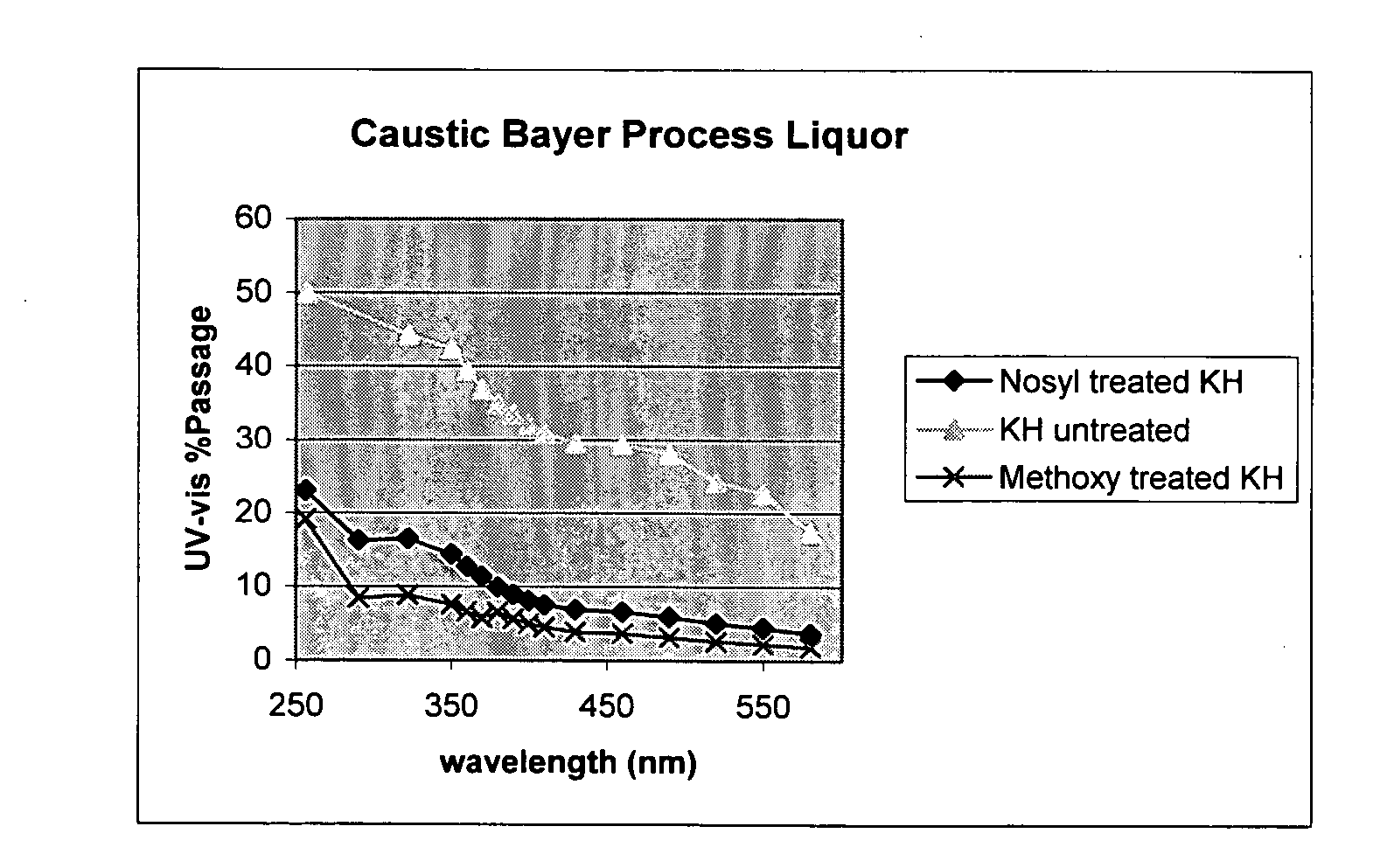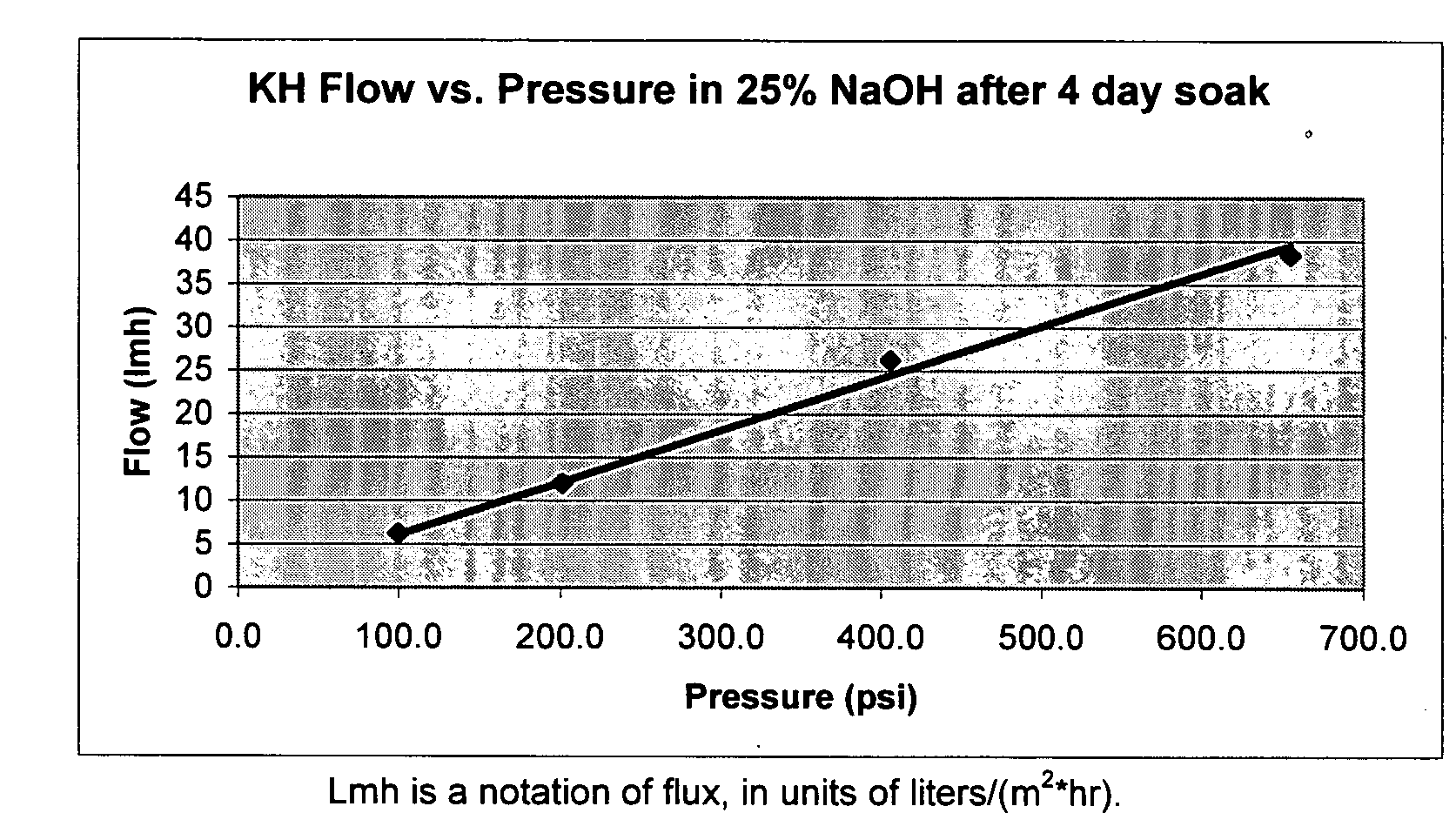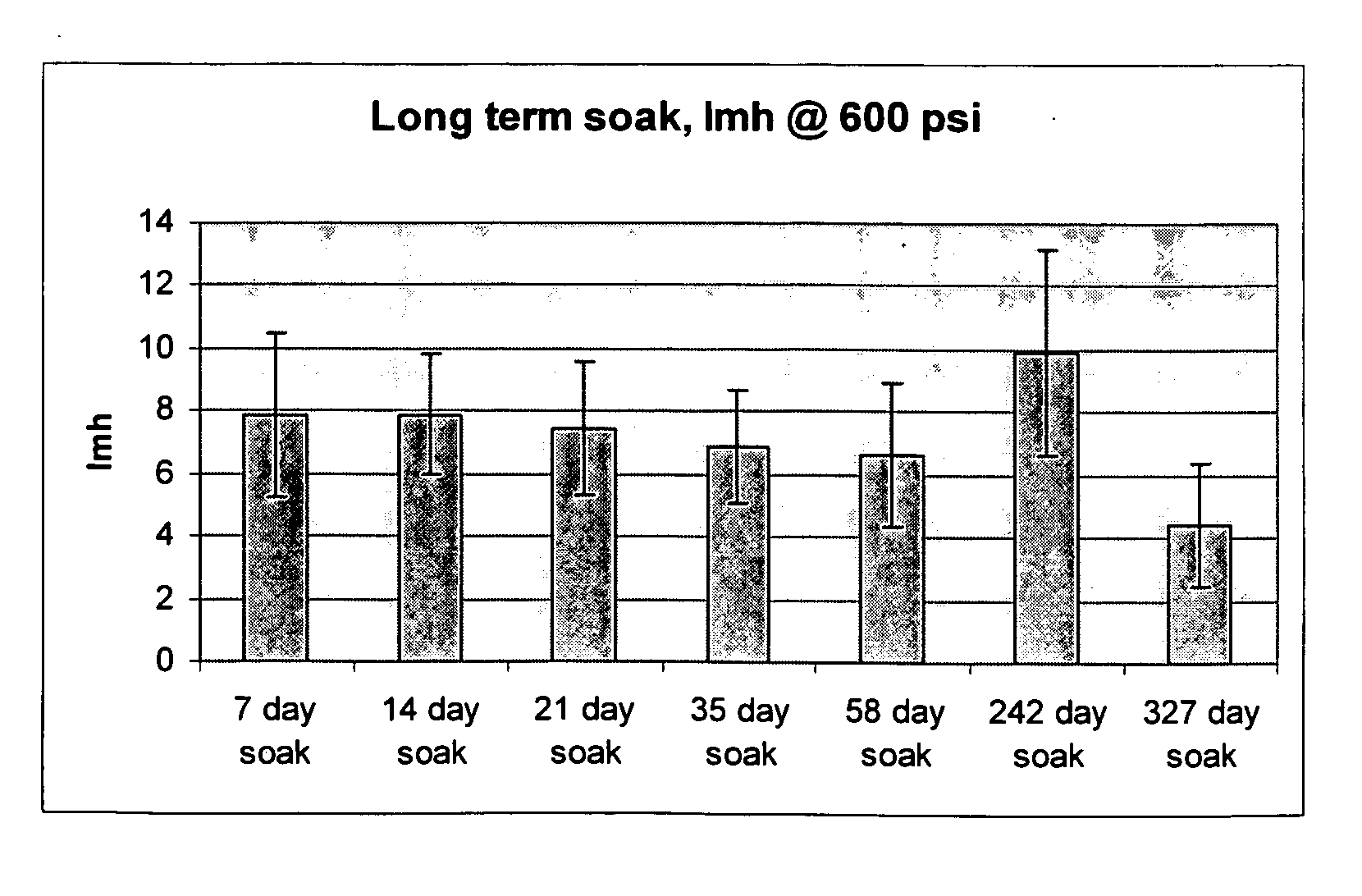Membranes and methods useful for caustic applications
a technology applied in the field of membranes and methods useful for caustic applications, can solve the problems of membrane swelling and performance decline, and achieve the effects of reducing performance, increasing the amount of organics incinerated, and reducing material volum
- Summary
- Abstract
- Description
- Claims
- Application Information
AI Technical Summary
Benefits of technology
Problems solved by technology
Method used
Image
Examples
specific embodiments
[0031] In one embodiment the feed solution has a pH of at least about 12.
[0032] In one embodiment the feed solution has a pH of at least about 14.
[0033] In one embodiment the feed solution comprises at least about 15% sodium hydroxide by weight.
[0034] In one embodiment the feed solution comprises at least about 20% sodium hydroxide by weight.
[0035] In one embodiment the feed solution comprises at least about 25% sodium hydroxide by weight.
[0036] In one embodiment the feed solution comprises at least 2.5 moles of titratable alkali per liter.
[0037] In one embodiment the feed solution comprises at least 5.0 moles of titratable alkali per liter.
[0038] In one embodiment the feed solution comprises at least 6.25 moles of titratable alkali per liter.
[0039] In one embodiment the feed solution is at a temperature of at least about 50° C.
[0040] In one embodiment the feed solution is at a temperature of at least about 75° C.
[0041] In one embodiment the feed solution is at a temperatu...
example 1
[0060] A commercially available polysulfonamide KH membrane (from GE Water & Process Technologies) was wet out with deionized water DI water for 20 minutes. After removing the water, a 1% (w / w) NaOH aqueous solution was poured on the face of the membrane for 1 minute and drained. A brief rinse of the membrane surface with about 10 mL of water was performed. The wet membrane was laid face up and immediately a methanol solution of p-nitrobenzenesulfonyl chloride or p-methoxybenzene-sulfonyl chloride was poured onto the membrane. The membrane was tested on a high caustic Bayer process liquor in stirred cells with 600 psig pneumatic pressure at room temperature RT. The resulting permeate was examined with UV-vis absorbance and decreases in the absorbance ABS was interpreted evidence of removing humic degradation organic compounds. The ratio of Absorbance of permeate divided by feed plotted at various wavelengths is shown below.
example 2
[0061] A commercially available polysulfonamide KH membrane (from GE Water & Process Technologies) was soaked in 25% sodium hydroxide by weight in water for 4 days then coupons were cut and placed in steel dead end test cells equipped with magnetic stirring. The cells were charged with 25% sodium hydroxide by weight in water at room temperature. The cells were pressurized with nitrogen to various pressures from 100 psig to 650 psig. The ability of the KH membrane to yield permeate flow as a function of pressure is shown in the following plot. The Y-intercept value of 0 psi indicates that no NaOH is rejected.
PUM
| Property | Measurement | Unit |
|---|---|---|
| thickness | aaaaa | aaaaa |
| thickness | aaaaa | aaaaa |
| pH | aaaaa | aaaaa |
Abstract
Description
Claims
Application Information
 Login to View More
Login to View More - R&D
- Intellectual Property
- Life Sciences
- Materials
- Tech Scout
- Unparalleled Data Quality
- Higher Quality Content
- 60% Fewer Hallucinations
Browse by: Latest US Patents, China's latest patents, Technical Efficacy Thesaurus, Application Domain, Technology Topic, Popular Technical Reports.
© 2025 PatSnap. All rights reserved.Legal|Privacy policy|Modern Slavery Act Transparency Statement|Sitemap|About US| Contact US: help@patsnap.com



